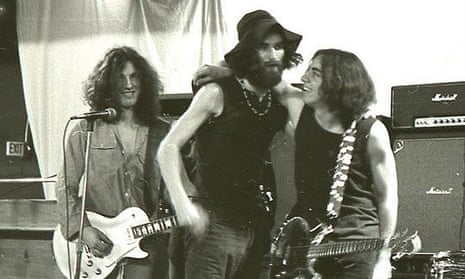The coastal New Jersey enclave of Asbury Park was pinned firmly to the pop-cultural map upon the release of Bruce Springsteen’s debut album Greetings from Asbury Park, NJ, in 1973. Frontloaded with testimony from Springsteen himself, in his role as rock’s plain-spoken elder statesman, this documentary from director Tom Jones (not that one) does a haphazard job of digging around the region in a bid to uncover how his sound – and a wider Asbury scene – emerged. Trailing some distance behind the 2016 autobiography Born to Run and the stage show Springsteen on Broadway (filmed for Netflix last year), the results form a distinctly minor item of Bruceology, exposed in its threadbare second half as something diehard fans might eventually watch for free on a flatscreen in the foyer of the Asbury Park Chamber of Commerce.
The film’s most useful feature is its opening history of an area that served as a genuine East Coast melting pot: the only spot along the Jersey shore where African Americans could bathe in public – partly, it transpires, as the sea met the county’s sewage output there. That laissez-faire party-town air has traditionally accounted for the utopian mix of white and black musicians within Springsteen’s E Street Band, yet, as many of those performers testify here, their early recordings were born out of the July 1970 unrest that turned neighbours against one another, and were aimed at restoring unity to a divided community. A starstruck Jones hardly pushes his interviewees on it, but somewhere in his naggingly monotonous morass of talking heads is the tale of how the Boss gained a social conscience.
It’s a somewhat shaky proposition, presenting some archive clips in the wrong aspect ratio, and generally resembling an extended episode of VH1’s Classic Albums, complete with what look suspiciously like fadeouts for ads. A fondness for blokey rock anecdotes will sustain viewers through the first hour, but the Asbury revival story plays as terribly bland, with its faux-inspirational score and shots of newbuilds gleaming in the late-summer sun. Your reward for enduring these civic-minded platitudes is a few minutes of Bruce and Little Stevie trading guitar licks at a charity do, and passing glimpses of poignant pop minutiae, such as the listing Springsteen placed while seeking a pianist. But the whole retains the humdrum look of documentary-making by committee.
